The mobile gaming industry has risen to become a juggernaut since its humble beginnings in 2008. It now accounts for more gaming revenue than console or PC revenue combined. However, after experiencing over a decade of straight growth, cracks have finally begun to show. 2022 saw the first ever decline in mobile games revenue. In such an environment, competition for players is fierce. It’s important to keep track of mobile marketing trends in gaming so one can stay ahead of the curve.
As game developers and mobile marketers fight increasing competition for a finite number of players, we can expect to see them employ even more innovative and effective digital marketing techniques. In particular, we can expect to see a stronger focus on key objectives like delivering effective user acquisition in a privacy centric environment, increasing player retention, and incremental monetization strategies.
Use this chapter selector to jump to specific spots in this article:
- Why is it important to keep track of trends?
- The growth of mobile gaming
- Opportunities for growth
- User behavior considerations
- Changing game models
- Demographic considerations
- Modern marketing strategies for mobile games
- Future trends in mobile game marketing
- Key takeaways
Why is it important to keep track of trends?
Recognizing short-term mobile marketing trends from long-term mobile marketing trends can be the difference between making or losing hundreds of thousands of dollars. Mobile marketing trends that fade quickly can be a waste of precious resources if it isn’t paired with great best practices.
Taking advantage of trends to market your mobile game is a great way to ride a wave and reach more potential players. At the same time, a marketing trend is not a replacement for great digital marketing tactics and delivering an excellent game experience to players.
With that in mind, let’s explore some of the most interesting and impactful trends in mobile gaming – as well as where things are likely heading.
The growth of mobile gaming
The rapid growth of the mobile games industry can be attributed to a number of factors, including the growing access and popularity of handheld devices and the increasingly high quality and quantity of mobile games. At the same time, marketers have become increasingly savvy in their efforts to reach and engage with gamers across all platforms.
While the rise of mobile gaming has been bolstered by the adoption of smartphones and tables, gaming itself has also become a more popular hobby around the world. According to a report by Newzoo, more than three billion people are expected to play games in 2022 and together spend nearly $200 billion. It is also stated that the main contributor to this current growth trend is mobile gaming, which is expected to generate $103.5 billion this year.
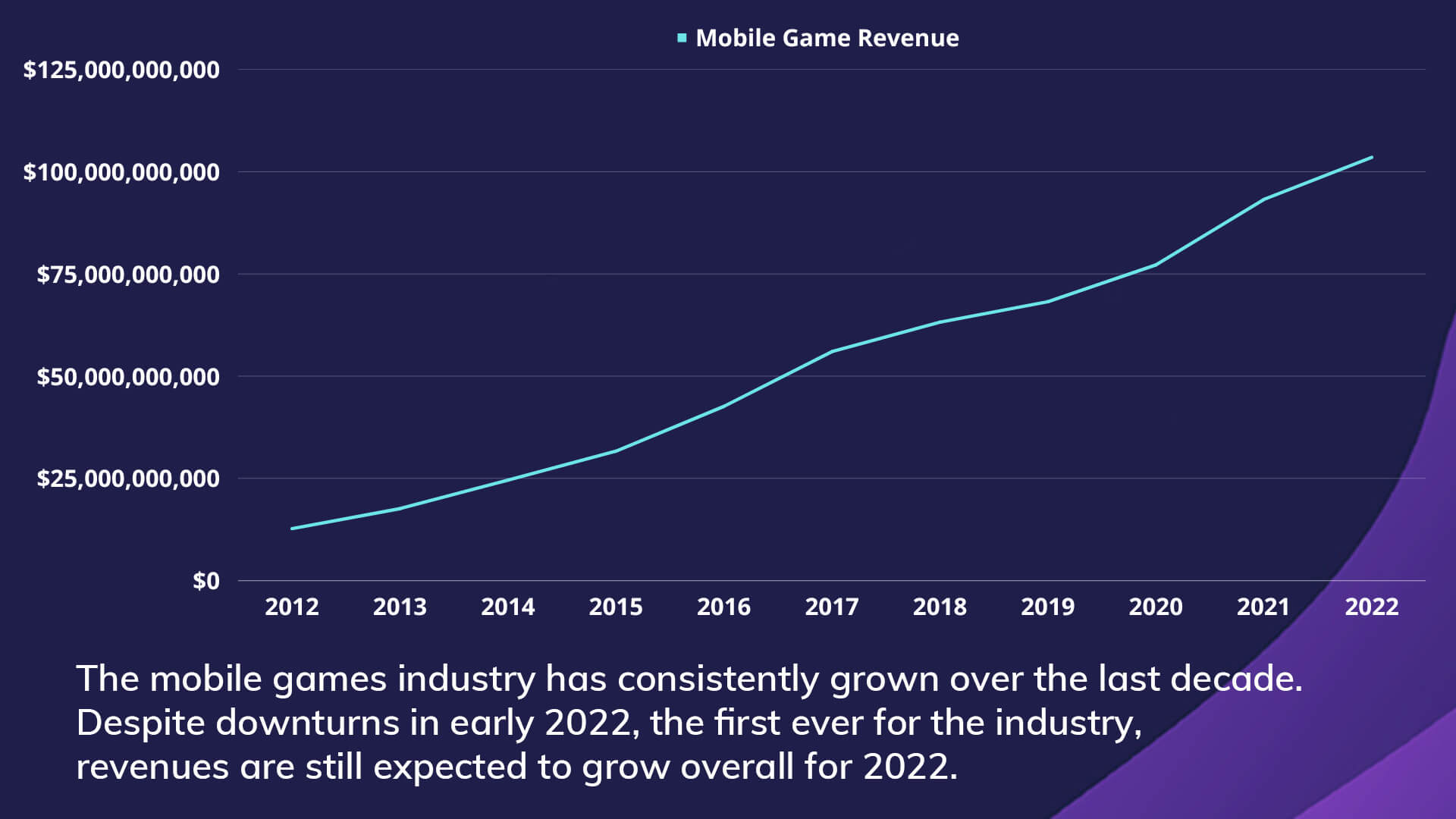
Privacy issues
Like most industries, the growth of mobile gaming has been impacted by privacy changes and macroeconomic trends. In particular, the introduction of the App Tracking Transparency framework by Apple has forced mobile marketers to deeply reconsider how they are allocating their ad budgets – even while making it more difficult to make informed decisions regarding their mobile marketing strategy.
Pandemic influence
The pandemic initially proved to bolster mobile game and mobile commerce revenue numbers – as many people turned to online sources of socialization, entertainment, and necessities amid global lockdowns. However, this trend of mobile app usage being pulled forward has reverted and become the source of its recent decline – with people exiting games and apps in favor of going outside, traveling, and enjoying events as lockdowns around the world end.
Opportunities for growth
Despite challenges with privacy, attribution, and market trends, there are still many opportunities for mobile game developers to grow their games. Here are a few of the opportunities every marketer should be keeping an eye on.
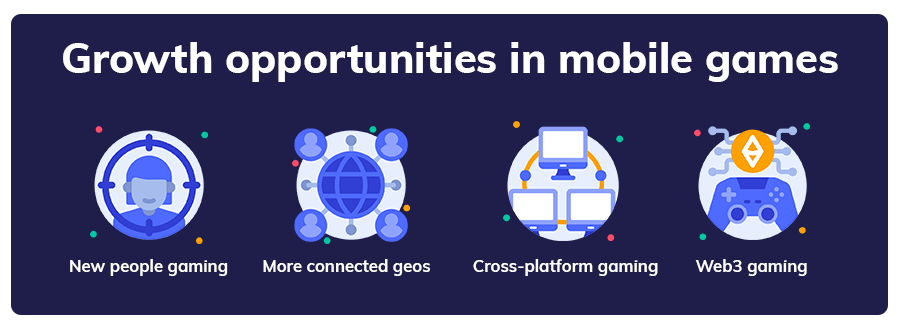
Net new gamers entering the games ecosystem
While people have spent less on mobile apps recently, the pandemic has still opened the door to whole new segments of players – including adults with more disposable income. What this means for mobile marketers is that there is a bigger proportion of financially capable users who are willing to make purchases for value.
Increasingly connected people and geos
Another opportunity arises from new technology like the ongoing launch of 5G networks around the world. The extra power from 5G is expected to boost the growth of mobile gaming by making it possible for gamers to play more demanding games on their mobile devices. Additionally, as more and more of the world becomes connected through 5G and broadband internet, new geos will continue to open up to mobile commerce and games – providing new opportunities for user acquisition.
Cross-platform game streaming
Game streaming is still a fairly nascent area of the industry, however it is poised to grow in coming years. A big element of playing streamed games includes cross-platform compatibility – meaning the doors will be open for console and PC gamers to hop over to mobile game platforms and vice versa – allowing people to interact with even bigger communities.
Web3 gaming
Web3 is another popular topic that is fueling interest in the future of mobile gaming. Web3 is the next era of technology, which runs on decentralized blockchain platforms and uses tokens as a means of economic exchange. This internet model is more transparent than its predecessors and theoretically should allow users to have a say in how the systems they use are governed – instead of blindly trusting the providers.
In comparison to web2, web3 technology eliminates the need for trusted middlemen like Google and Apple. Rather, users are provided with open-source cryptographically verified tools that allow them to understand and keep track of the digital assets they are interacting with.
Web3 gaming continues to see huge investment and growing numbers of players and revenue. However, digital marketing to web3 players is vastly different from digital marketing to traditional mobile users – and usually consists of partnerships with online communities instead of ad campaigns.
User behavior considerations
It’s no secret that people are spending more time on their mobile devices. In fact, a 2021 report by Statista found that most people spend an average of 5-6 hours per day on mobile devices.
This trend is being driven by a number of factors, such as the increasing popularity of social media, the rise of mobile commerce, and the growth of the on-demand entertainment market. This increase in mobile device usage has also led to a positive impact on the mobile gaming industry.
Idle gaming
In addition, the improved quality of mobile games and the growing popularity of casual gaming have attracted many smartphone users to play. In particular, there has been an increase in the focus on “endless” or “idle” games, which can be played for extended periods of time without requiring the player to complete a goal or reach a certain level. This type of game is particularly popular with casual gamers who prefer entertainment without committing to competitive play.
Web apps
The way users interact with games is also changing. Traditionally, players would need to download and install their games before playing them. However, given the ubiquity of web browsers, and the high platform fees associated with mobile gaming – more and more developers are considering web apps as a viable alternative. This trend is particularly accentuated in the web3 space which exists fundamentally outside the mobile phone platforms.
This new model has opened the door for independent developers to make their games available to a larger audience and has also led to an increase in the growth of gaming communities. While this means more people are participating in mobile gaming, the delivery model of those games is diversifying. No longer are mobile games only available via downloaded mobile app; some mobile-optimized games are available through traditional websites as well.
Positive outlook
This is not to say that mobile game publishers should be fearful about new and different sources of games and entertainment, far from it. It does mean that mobile game publishers should understand the entire landscape in which they are competing for the attention of players. Awareness of user behavior materially impacts which kind of marketing is most effective.
Overall, it is clear that user behavior is having a positive impact on mobile gaming. As people continue to spend more time on their phones, companies in this industry can expect revenues to grow over the coming years – provided that they are able to stay ahead of the competition.
Changing game models
The growth of mobile gaming has subsequently led to a number of changes in the way that games are designed and marketed.
In particular, the free-to-play game model has proved so successful that many elements of free-to-play mobile games, such as in-game purchases, have begun showing up in premium console and PC games.
Free-to-play games
Free-to-play games allow users to play games for free and make in-game purchases that improve the game’s experience – either aesthetically or functionally, or both. Additionally, free-to-play game developers can bolster revenue by hosting ads in their games.
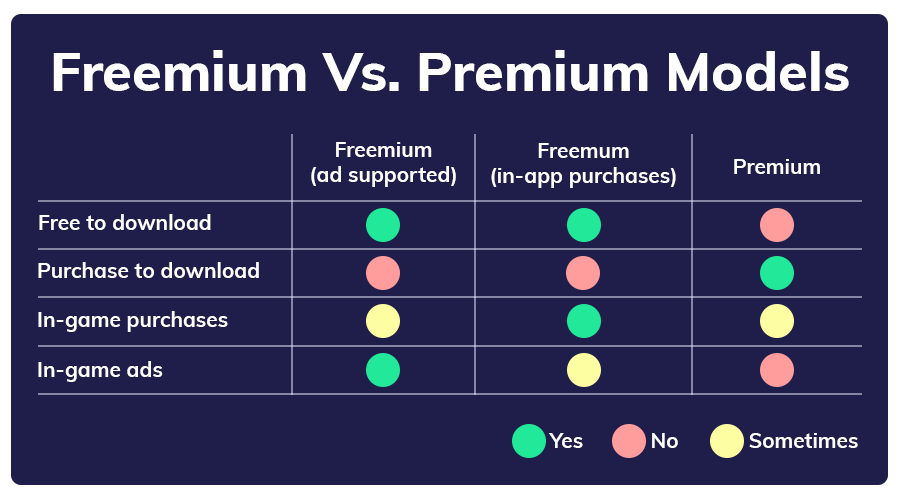
For developers, free-to-play games not only offer a great way to continue making money from players but also build up their first-party data so they can better target players in the absence of data from providers like Google and Apple.
Play-to-earn and play-to-own
Web3 games may upset this status quo yet again, as play-to-earn and play-to-own models become more popular with the continuing rise of web3 gaming. In these game models players earn money or an actual stake in the game by playing, trading, and creating in-game assets.
Demographic considerations
The rise of mobile gaming and data acquisition allowed for game developers and marketers to understand their audience like never before and hyper-target potential new players. This allowed them to stop marketing games so broadly and begin to appeal to specific audiences such as older gamers and women.
Targeting such niche audiences can prove beneficial as well – as there is less competition with niche audiences vs. mainstream audiences.
In addition to being able to target potential players more effectively, game developers could also display ads in their games more effectively – allowing them to charge more for niche targeting and make more revenue from ads.
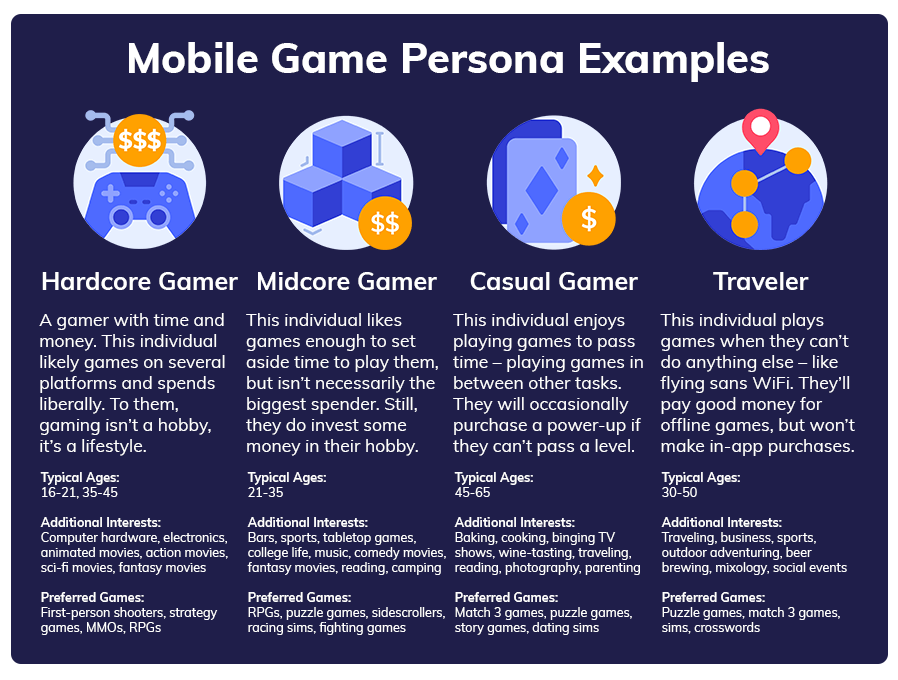
Despite more conservative consumer spending behavior and ongoing data challenges, the mobile gaming market is still expected to grow at a healthy rate in the coming years – something that is sure to help mobile marketers rest easy.
Modern marketing strategies for mobile games
For mobile gaming, the three biggest mobile advertising objectives for growth are new user acquisition, retaining existing customers, and promoting in-app purchases. To achieve these, you should consider strategies like soft-launches to grow an audience and improve data analytics to better understand your customers.
Wherever you are in your mobile game journey, it is important for you to identify new ways to gain market share and optimize your mobile advertising spending. The following are some modern marketing strategies that mobile gaming companies can use to reach their target audiences.
Social media
Social media platforms such as Facebook, Twitter, and Instagram are excellent channels for promoting mobile games with organic content marketing and paid advertising. This is because they allow companies to reach a large number of people in a relatively short amount of time. In addition, social media platforms provide gaming companies with an opportunity to engage directly with their target audience through means like direct messaging.
Make sure to identify the demographics of your target audience before allocating your social media spend. This will help you decide which platform to prioritize your budget on. For example, teenagers are more active on TikTok and you’ll find an active female audience on Pinterest. Fun fact: Video content does very well on almost all platforms!
In-game advertising
In-game mobile advertising is a form of advertising that appears within mobile games. This can take the form of banner ads, video ads, or even pop-up ads. Regardless of the format you use for a mobile ad, in-game advertising is an effective way to reach gamers who are already engaged in mobile gaming. This is a powerful method because gamers tend to be more open to trying out new games compared to newcomers who have never played games before.
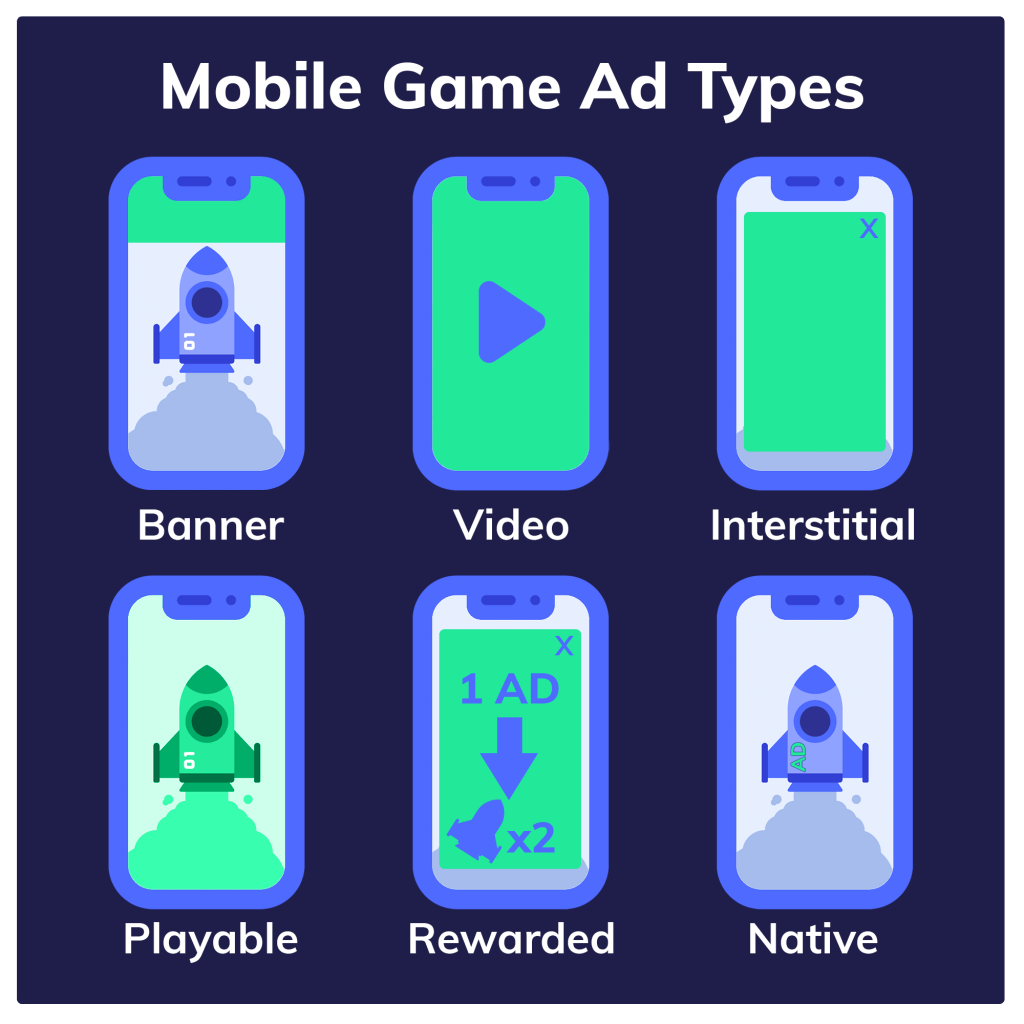
App store optimization
App store optimization (ASO) is the process of refining your game’s app store product page to increase discoverability and conversion in app stores such as Apple’s App Store and Android’s Google Play. It requires A/B testing, a great understanding of analytics, and the ability to iterate quickly on analytic results. This is often an overlooked strategy due to its complexities, though companies like Upptic can help.
Search engine optimization
Search engine optimization (SEO) is similar to app store optimization, except for search engines such as Google Search instead of app stores. Search is one of the most important ways that people discover new mobile games, so this is also essential for discoverability and conversion – especially for games that aren’t in popular app stores.
In addition to organic search engine optimization you can also purchase ad space on search engines through providers such as Google Ads and Apple Search Ads.
Influencers
Influencers are people who have a large following on social media. They can be very effective in promoting mobile games to their followers. Gaming companies can work with influencers by providing them with codes to give away to their followers or by sponsoring them to stream their gameplay of the game.
Email marketing and SMS marketing
While email marketing may not be the best channel for initial user acquisition, it can be a great lever for ongoing retention and retargeting campaigns. Similarly, a push notification can be effective for retargeting and retention as well. Make sure you’re compiling as much first-party data as possible from those who play your games – including email addresses and phone numbers.
Going cross-platform
As the gaming industry becomes increasingly competitive, it is important for companies to explore different ways of reaching their target audience. One way of doing this is by releasing mobile games that are compatible with other platforms such as consoles or PC. This allows companies to reach gamers who may not necessarily be interested in mobile gaming.
Future trends in mobile game marketing
As evidenced above, the mobile gaming and mobile marketing industries are both seeing huge disruptions – data privacy issues, the pandemic, web3, and so on. The status quo has been severely disrupted and it’s unlikely things will settle down in the near future. However, here are some trends to keep an eye on and keep ahead of.
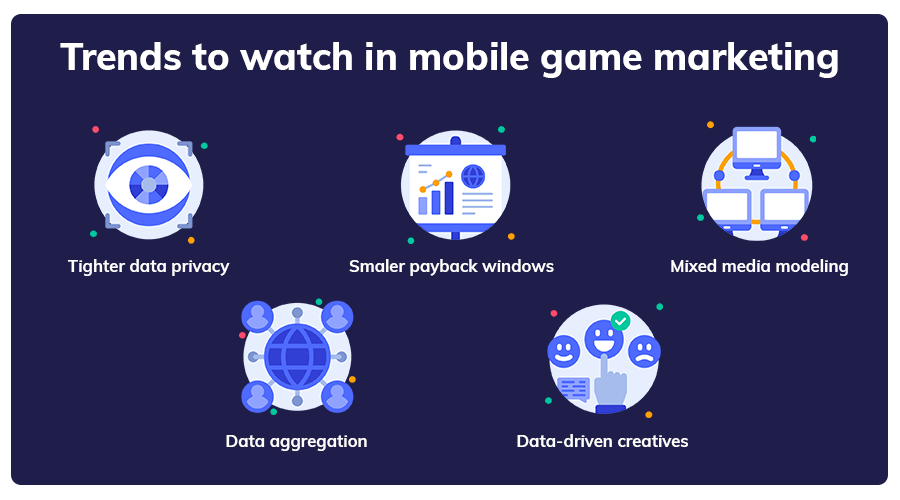
Tighter policies on personal data
Policies around the use of personally identifiable data will continue to tighten in the mobile marketing industry due to privacy concerns. This will cause increasing difficulty for companies trying to collect data about their target audience. Marketers should deeply reconsider how much money they are spending on advertising and where they are spending that money. Additionally, they should consider innovative strategies such as partnering with online communities.
Tighter payback windows
Due to the lack of reliable predictive models from diminishing attribution efficacy, companies will need to start focusing on short-term predictions and tighter payback windows to ensure they are not overbidding on ads. Marketing strategies that look more closely at the near-future will be more effective under these conditions.
Mixed media modeling
With tighter returns on ad spend (ROAS), it’s important to spend every marketing dollar effectively. With a drop in traditional measurement capability, companies will need to seek alternative ways of measuring ad effectiveness. One way to do this is with mixed media modeling. This approach uses multiple data sources to track how different channels contribute to a sale. By using this method, companies will be able to attribute sales to specific marketing channels and better understand where to focus their marketing resources.
First-party data aggregation
First-party data will become more valuable as stricter privacy policies are put in place. One of the biggest challenges with this is the complications of aggregating and analyzing data sets. Data does not inherently give information, but rather needs to be processed before transforming into actionable insight. Companies that are able to aggregate this data will have a competitive advantage over those that do not. Because of this, companies should consider building out infrastructure for collecting first-party data and teams for analyzing and acting on this data.
Data-driven creative
As data becomes more important in the mobile gaming industry, companies will need to use it to drive their creative decisions. This means making good use of A/B tests, analytics, and data science to iterate quickly and tweak ads to make them more compelling for target audiences.
Key takeaways
Mobile game marketing is having a tumultuous time right now, but it’s not in danger of going away – and will likely continue to grow. However, the turbulence does mean that mobile app marketers need to be particularly cognizant of every dollar they spend.
Even the best mobile game needs a proper app marketing strategy to attract users to play. It can be daunting to put together a holistic, adaptive marketing strategy – so feel free to reach out to one of our reps at Upptic to discuss a tailored plan for your mobile game.

